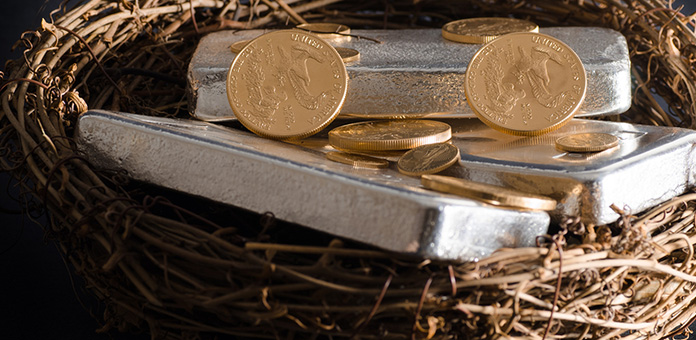
As we have discussed previously, the gold to silver ratio (GSR) is a closely watched market indicator for many long-time precious metal traders and investors. In fact, many gold and silver investors use the GSR to periodically rebalance their portfolios. With the recent market moves, it is useful to evaluate how this has affected the GSR and what it may mean for further pricing activity.
GSR Today and Silver
The current GSR has dropped from a peak of 80.57 in March of this year to a recent 67.07. One has to go back to August 2014 to find the ratio this low. The ratio has dropped by 10% in the last month alone. If the gold price holds constant and the gold-to-silver ratio falls from its current range of around 70 down to 60, this could send silver up, as high as $22 per ounce, according to some analysts. 1
GSR as a Tool for Investing
As an investment tool, the GSR often serves as a signal that the relative prices in the precious metals market are out of balance. For example, a GSR of 15 (only seen in the last century at the end of the silver bull market of 1964 to 1980) would be considered a strong sell signal for silver (as proved to be the case). On the other hand, if it gets near 100, as in 1993, most would see that as silver-friendly and a reason to buy silver and/or sell gold.
Any effort to use the GSR as a predictor requires a careful evaluation of whether the current number is caused by real market factors or other dynamics. Beyond the proven value of the GSR in this context, others see significant changes in the GSR as a trend indicator for future pricing moves. A good example of this is the recent past. In April 2016, before Brexit, the GSR broke a five-year trend, indicating the recent pricing shifts.
Under- or Overvalued?
The issue of how effective the GSR is as a predictor is hotly debated. However, as indicated above, it is a fact that there are times when the two metals are relatively over or undervalued and priced in the market due to a variety of factors. That imbalance often does precede a shift in the prices that bring the ratio back to what is seen as a “normal range” that today runs from 40 to 70, with some major short-term deviations. 2
Some hardcore GSR disciples see an eventual return of the indicator to 16. They point to the long history of the ration sitting at 12–18, and the strong believe that is the “natural order of things.” Some base this on the fact that silver exists in the earth’s crust in a roughly 17:1 ratio; others simply look to millennia of tradition.
Near- and Long-Term Possibilities
As both gold and silver settle out in the post-Brexit world, many analysts see the ratio remaining relatively constant in the 60 to 80 range as both precious metals move upward under a number of bullish factors. If it were to drop significantly lower, however, silver could experience some large upward price shifts. Understanding how the gold to silver ratio operates and what it means for your portfolio can be very helpful, especially if you are considering investing in silver.
Additional Sources
2 – http://www.macrotrends.net/1441/gold-to-silver-ratio


